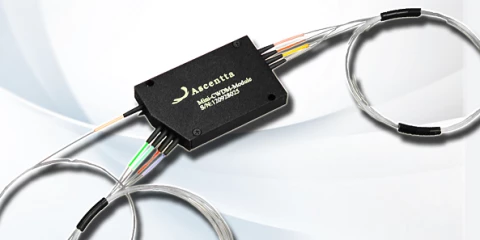Description
The CWDM Wavelength Division Multiplexer by Ascentta, Inc. is a high-performance optical device that allows for the simultaneous transmission of multiple optical signals over a single fiber optic cable.
It employs Coarse Wavelength Division Multiplexing (CWDM) technology to combine or separate wavelengths in the 1471nm to 1611nm range. The CWDM module and mini CWDM module provide flexible and efficient solutions for expanding the capacity of fiber optic networks. Ascentta offers CWDM filter, and module of 4 channel, 8 channel or custom configurations.
Ascentta CWDM Module 8-channel (Ask for Mini Pkg.)
Specifications
| Operating Wavelength: | 1471 nm |
|---|---|
| Operating Bandwidth: | 13 nm |
| Isolation (min): | 30 dB |
| Max Power Handling: | 0.3 W |
| Polarization Maintaining: | Yes, No |
| Insertion Loss (23℃, All SOP) Max.: | 2.6 dB |
| Directivity Min.: | 50 dB |
| Return Loss Min.: | 45 dB |
| Operating Temperature: | 0 to +70 °C |
| Storage Temperature: | -40 to +85 °C |
| Fiber Length: | 1-3 m |
Features
- Coarse Wavelength Division Multiplexing (CWDM) technology
- Simultaneous transmission of multiple wavelengths over a single fiber
- CWDM channel with specific ITU grid wavelengths
- CWDM module for network expansion and capacity enhancement
- Mini CWDM module for space-constrained applications
- High-performance optical add/drop multiplexer (OADM) option
- Various wavelength combinations and configurations available
- High-isolation and mini-size options for specific requirements
Applications
- Fiber optic network expansion and capacity increase
- Telecommunications and data center applications
- Metro and access networks
- CATV and broadcast systems
- Optical transport systems
- Research and development in fiber optics
Frequently Asked Questions
Who is the provider of this product?
The provider of the product is Ascentta, a company that specializes in optical solutions. They are located at 370 Campus Dr. Suite 105, Somerset, NJ 08873.
What are the available CWDM Module types?
There are two available types of this CWDM Module, a 4-Channel type and an 8-Channel type. The number of channels refers to the number of distinct optical signals that the module can handle simultaneously.
What is the Channel Spacing?
The Channel Spacing refers to the spectral distance between the wavelengths that the module uses for data transmission. For this CWDM Module, the Channel Spacing is 20 nm.
What is the accuracy of the Center Wavelength?
The Center Wavelength Accuracy is a measure of how precisely the module can target the desired transmission wavelength. For this product, the Center Wavelength Accuracy is ± 0.5 nm, meaning the actual wavelength can vary by up to 0.5 nm from the intended target wavelength.
What is the bandwidth at -0.5dB?
The Bandwidth at -0.5dB is a measure of the spectral width of the channel at which the signal power falls to -0.5 dB below its peak power. For this product, the minimum Bandwidth at -0.5dB is 13 nm.
What are the Insertion Loss values for 4-Channel and 8-Channel?
Insertion Loss is a measure of the power loss of the signal as it passes through the module. It's an essential parameter since lower Insertion Loss means more efficient transmission. For the 4-Channel CWDM Module, the maximum Insertion Loss is 1.8 dB, and for the 8-Channel CWDM Module, the maximum Insertion Loss is 2.6 dB.
What is the maximum Optical Power Handling?
The maximum Optical Power Handling is the maximum level of light power that the module can safely handle without being damaged. For this product, the maximum Optical Power Handling is 300 milliwatts (mW).
How can I order this product?
To order this product, you should contact Ascentta directly. The company allows you to specify custom configurations, including the number of channels, start channel, fiber type, fiber length, connector type, and whether an express port is required.
What is the effect of adding connectors?
Connectors are used to join optical fibers and allow light signals to pass from one fiber to another. However, adding connectors can introduce additional Insertion Loss (IL), Return Loss (RL), and Polarization Dependent Loss (PDL). These losses can affect the overall performance of the optical module, so it's essential to factor in these changes when designing a system using this product.
What is the size of the package?
The physical dimensions of the package containing the product are 110x95x8 mm. It's important to know the size for considerations related to installation space and transport logistics.
What is SOP?
SOP, or State Of Polarization, refers to the orientation of the electric field vector in the light wave produced by the optical module. Polarization is an essential aspect of light wave propagation, especially in fiber optic communications, where certain effects like Polarization Mode Dispersion (PMD) can affect signal quality. In the given specifications, SOP refers to the conditions under which the measurements were taken.
Similar Products

Bandpass Filter -1528-1565nm
GKER Photonics
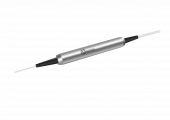
1310-1480-1550nm Polarization Maintaining Filter Wavelength Division Multiplexer-PMFWDM Series
GKER Photonics
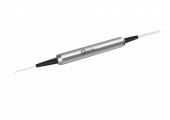
1530-1580nm Polarization Maintaining Filter Wavelength Division Multiplexer
GKER Photonics

Polarization Maintaining Fused Wavelength Division Multiplexer (980/1550)-PMWDM Series
GKER Photonics
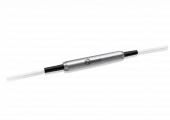
980/1550 nm Singlemode Wavelength Division Multiplexers-WDM
GKER Photonics

2 µm Polarization Maintaining Fused Wavelength Division Multiplexer-PMWDM Series
GKER Photonics

Singlemode Wavelength Division Multiplexer (1310/1550, 1480/1550) -WDM Series
GKER Photonics
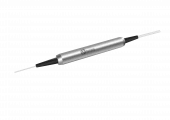
1310-1480-1550nm Filter Wavelength Division Multiplexer-FWDM Series
GKER Photonics
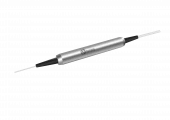
Filter Wavelength Division Multiplexer
GKER Photonics
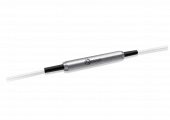
635-1064 nm Wavelength Division Multiplexers
GKER Photonics
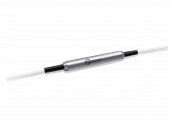
976/1064 nm Singlemode Wavelength Division Multiplexers
GKER Photonics

Polarization Maintaining Fused Wavelength Division Multiplexer 976/1064nm
GKER Photonics
Thank You!
Your inquiry has been received.
Create an account by adding a password
Why create an account?
- Auto-complete inquiry forms
- View and manage all your past messages
- Save products to your favorites
- Close your account anytime — no hassle
